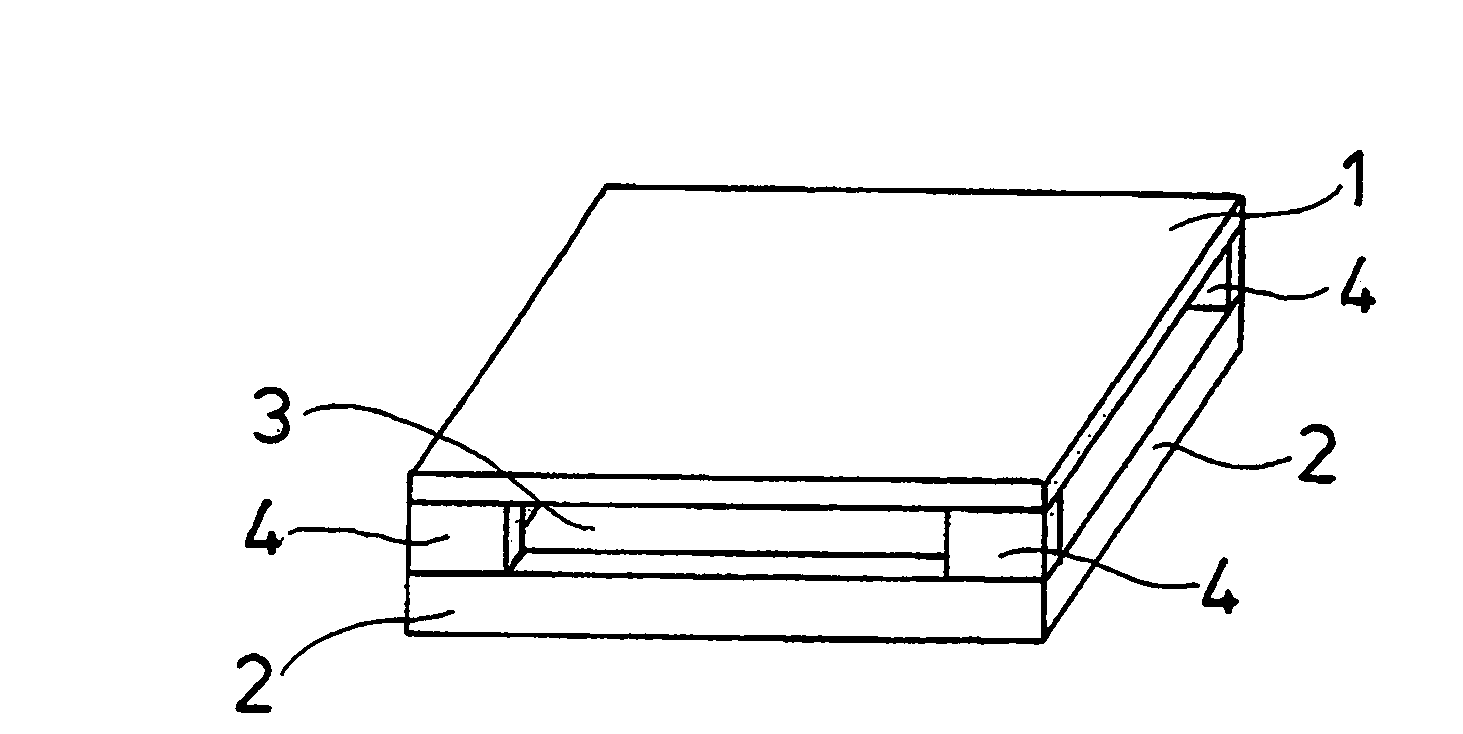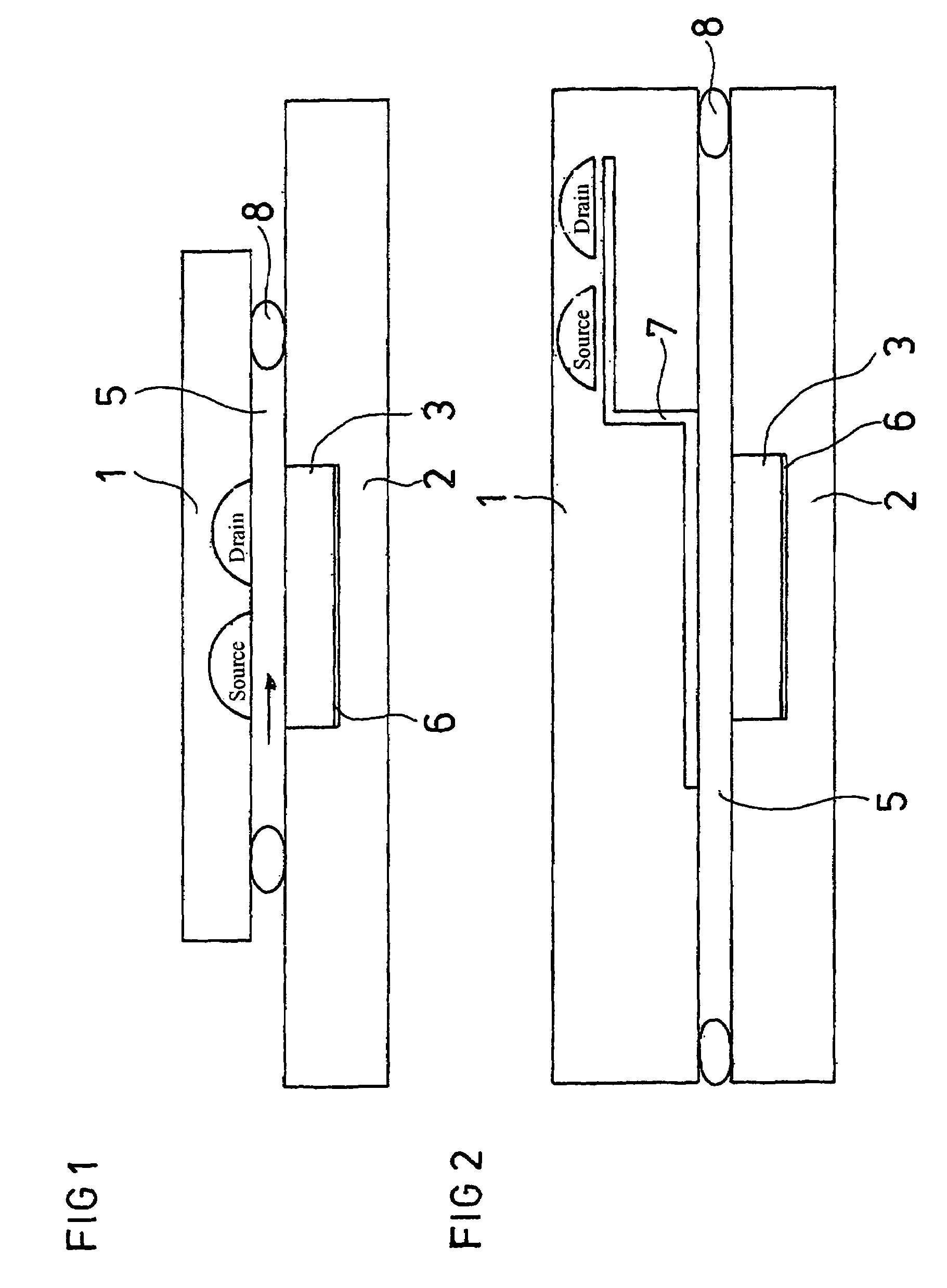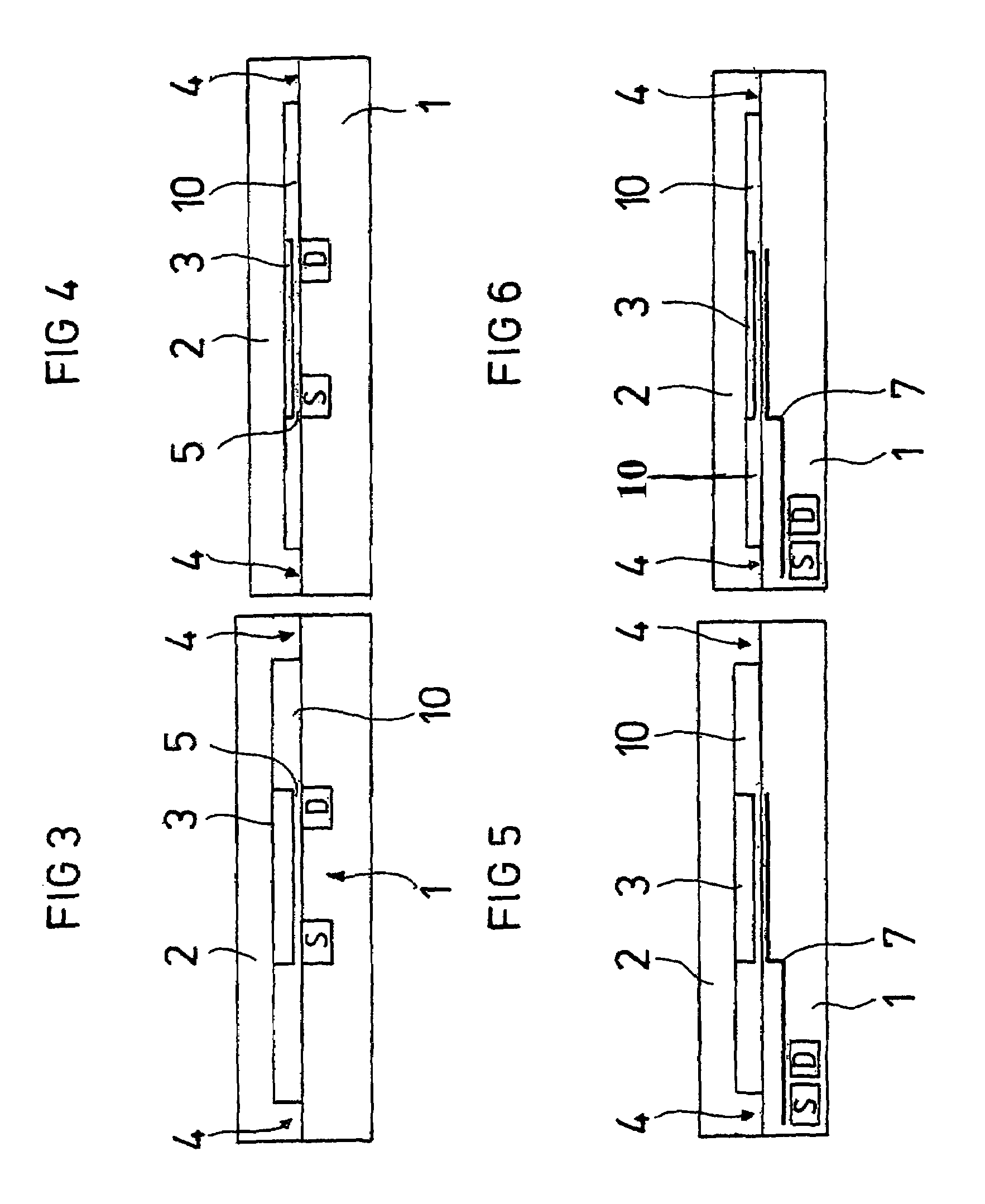Gas-sensitive field-effect transistor with air gap
a field-effect transistor and air gap technology, applied in the field of gas sensors, can solve problems such as electrical short circuits, plugged diffusion channels, damage to sensitive layers,
- Summary
- Abstract
- Description
- Claims
- Application Information
AI Technical Summary
Benefits of technology
Problems solved by technology
Method used
Image
Examples
Embodiment Construction
[0024]FIG. 7 illustrates a prior art SGFET 1. The diffusion of a target gas through an air gap 5, represented by polarizable oval particles, generates on a gas-sensitive layer 3 a certain potential which couples to the channel of the SGFET 1 and modifies the current between the source and the drain (IDS). The gas-sensitive layer 3 is connected to a gate electrode 6. The two tappable voltages lie between the drain and the source (UDS), and between the gate electrode 6 and the source (UGS).
[0025]FIGS. 1-6 provide an overall view of an aspect of the gas-sensitive field-effect transistor of the present invention, with emphasis on the formation of spacers 4 on the substrate 2. If the surface precision requirements of the gas-sensitive layer 3 are relatively low, then the recess of the gas-sensitive layer 3 incorporated into the carrier substrate 2, as illustrated in FIGS. 1 and 2, can be filled in completely such that this layer 3 closes flush with the substrate surface. FIG. 1 illustrat...
PUM
| Property | Measurement | Unit |
|---|---|---|
| thickness | aaaaa | aaaaa |
| height | aaaaa | aaaaa |
| depths | aaaaa | aaaaa |
Abstract
Description
Claims
Application Information
 Login to View More
Login to View More - R&D
- Intellectual Property
- Life Sciences
- Materials
- Tech Scout
- Unparalleled Data Quality
- Higher Quality Content
- 60% Fewer Hallucinations
Browse by: Latest US Patents, China's latest patents, Technical Efficacy Thesaurus, Application Domain, Technology Topic, Popular Technical Reports.
© 2025 PatSnap. All rights reserved.Legal|Privacy policy|Modern Slavery Act Transparency Statement|Sitemap|About US| Contact US: help@patsnap.com



